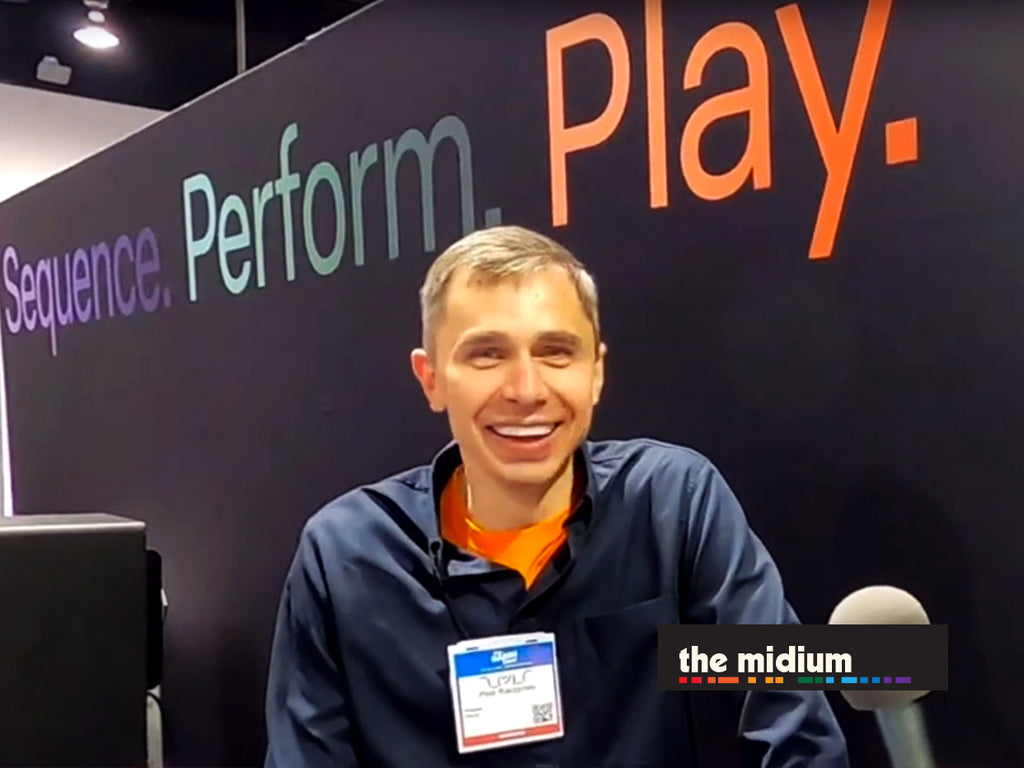Interviewing Piotr Raczynski of Polyend introduced us to the industrial beginnings of the Polyend brand, Raczynski's own musical projects, and the ethos behind their MIDI sequencer and sampler aptly named the Polyend Play. A mix of listening to large machines work in concert and watching their synchronized movements plow through different phases of mass production while working at a factory, along with his own love of music and passion for music technology, inspired Raczynski to invent electronic musical instruments through the company he would go on to establish: Polyend.
As of our interview with Raczynski at NAMM 2022 and the writing of this article, the Polyend Play is the newest of such electronic musical instruments created by the Polish company. While Raczynski and his team developed an instrument that replaced work with fun, they considered ways to streamline the music production process and at once give artists a sampler and sequencer that would play (pun always intended) a more active role in the composition process itself. Capable of giving the artist ideas that could then be customized and treated into new tracks and songs, Polyend also promises that the Polyend Play allows the electronic musician to play with ready-made samples and craft new ideas fairly quickly. As a sampler and MIDI sequencer, it is not a synthesizer; rather, it contains sounds produced with synthesizers, drum machines, voices, and any other sound generator or source that may be arranged and played back in any number of ways to write new songs and perform live. Multiple music genres and styles are addressed by the Polyend Play's presets, including hip-hop, trap, lo-fi electronic music, house, EDM, IDM, and more.
During our conversation, we also learned more about the inspiration behind the Polyend Play being designed as a flexible performance tool. The performance side of the Polyend Play involves using its multifunctional touch-sensitive knobs––which may be double tapped for access to more edit functions––buttons and pads to change parameters of the onboard MIDI sequencer and sampler, as well as various settings and MIDI parameters of external electronic musical instruments and effects. It interfaces with the outside world via its USB connector and MIDI jacks, so artists have more than one way to have the Polyend Play communicate with computers, synths, drum machines, external effects, and other hardware. Raczynski's vision for a sampler and MIDI sequencer that is both fun and inspiring to play gets more dimension by the Polyend Play's ability to give the artist an array of playback methods that can add variety and spontaneity to a pre-produced track.
As we see during our conversation, Piotr Raczynski's devotion to crafting electronic musical instruments that transcend conventional playing (i.e. Polyend Perc) appears to be about making connections. The discontinued Polyend Perc, for example, connects electronic musical instruments and MIDI controllers with actual physical surfaces, giving artists including Aphex Twin more ways to produce new music. Fast forward a few years and the Polyend Play, according to Raczynski, is all about connecting electronic musicians and artists with all that makes music production "play" instead of "work."
All that remains is listening to the new art that will come as a result of artists and electronic musicians connecting with the Polyend Play.
We hope you enjoy our conversation with Polyend's founder, Piotr Raczynski. It was an easy chat that took us from the genesis of Polyend to the creation and use of their new MIDI sequencer and sampler, the Polyend Play. As time goes by, The Midium® will continue improving upon our interview format, and we will post more of these interviews in our effort to show you more about all that is involved in the creation of the electronic musical instruments you play and love, and the stories of the people who make them possible.

